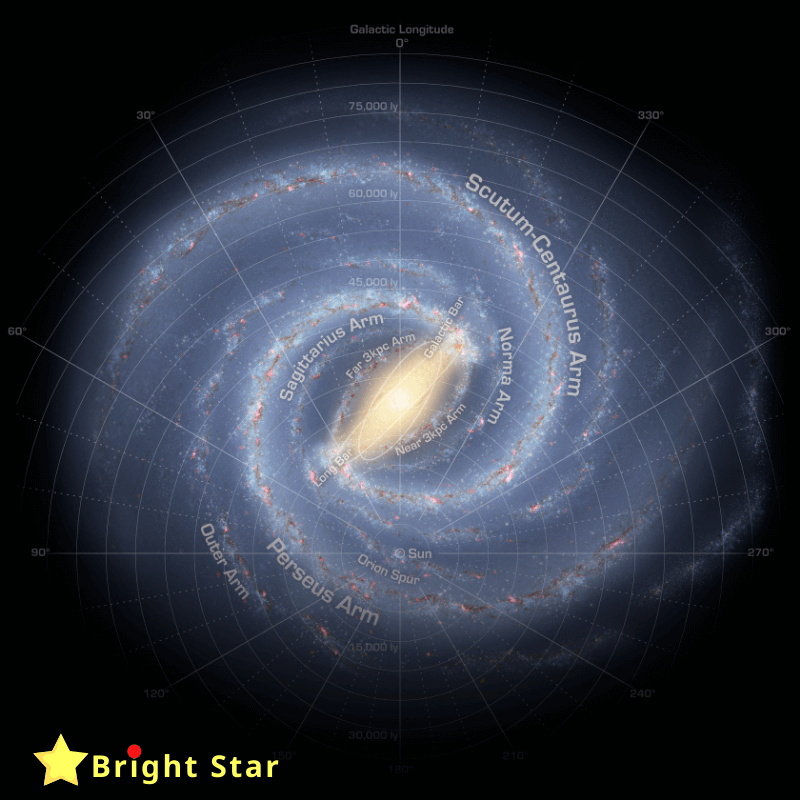The Milky Way is the galaxy that includes our Solar System. It is made up of trillions of galaxies! If we are lucky, we might see the milky way in the sky. From the earth, it appears as a band because the disk-shaped structure of the milky way is visible from the inside.
A galaxy is a large group of stars, gas, and dust bound together by gravity. The shapes and sizes come in various types. The Milky Way is a barred spiral galaxy with an expected visible diameter of 100,000–200,000 light-years. Recent simulations suggest that a dark material disk, also containing some visible stars, may extend up to a diameter of almost 2 million light-years. The Milky Way has several satellite galaxies. IC 1101 is a supergiant elliptical galaxy, and it has a total of about 100 trillion stars!
It is most likely to contain more than 100-400 billion stars and at least 400 billion planets! Our Solar System is placed at a radius of about 27,000 light-years from the Galactic Centre. The rotational period is about 240 million years at the radius of the Sun. The Milky Way as a whole is moving at a velocity of approximately 600 km per second. The oldest stars in the Milky Way are nearly as old as the Universe itself! And the Universe is 14 Billion years old. Our galaxy itself is 13.51 billion years old.
The Milky Way has a relatively low surface brightness. Its visibility can be greatly reduced by background light, such as light pollution or moonlight. The sky needs to be darker than about 20.2 magnitudes per square arc second for the Milky Way to be visible. t should be visible if the limiting magnitude is approximately +5.1 or better and shows a great deal of detail at +6.1. This makes the Milky Way difficult to see from brightly lit urban or suburban areas, but very prominent when viewed from rural areas when the Moon is below the horizon. Maps of artificial night sky brightness show that more than one-third of Earth’s population cannot see the Milky Way from their homes due to light pollution.
As viewed from Earth, the visible region of the Milky Way’s galactic plane occupies an area of the sky that includes 30 constellations. The Galactic Center lies in the direction of Sagittarius, where the Milky Way is brightest. From Sagittarius, the hazy band of white light appears to pass around to the galactic anti-center in Auriga. The band then continues the rest of the way around the sky, back to Sagittarius, dividing the sky into two roughly equal hemispheres.
The galactic plane is inclined by about 60° to the ecliptic (the plane of Earth’s orbit). Relative to the celestial equator, it passes as far north as the constellation of Cassiopeia and as far south as the constellation of Crux, indicating the high inclination of Earth’s equatorial plane and the plane of the ecliptic, relative to the galactic plane.
More – Did You Know ?
More from Bright Star

